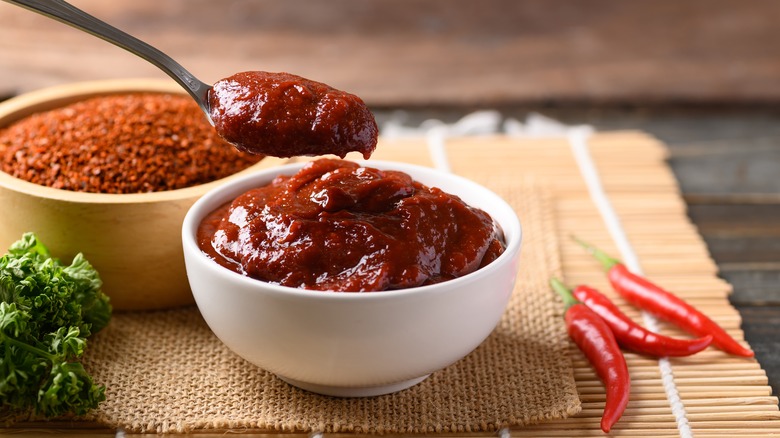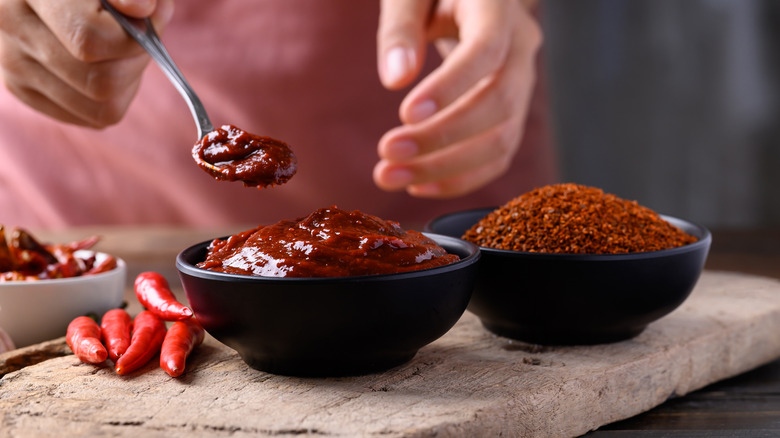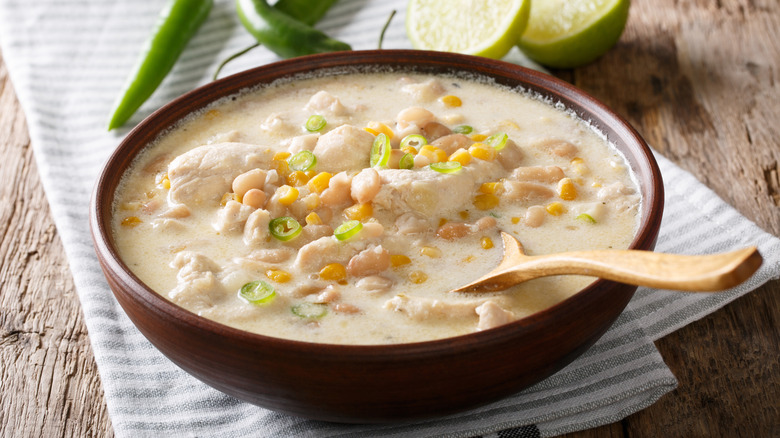Give Your Chili An Easy Upgrade With Some Gochujang
Chili is a great dish to make when you're looking for something fast, easy to put together, and comforting. It's hearty while not being particularly heavy, and you can dress it up just about any way you like. Whether you're making a quick and easy chili recipe or a more delicate white chili with chicken, you'll want to add a little kick to this dish to make it really interesting. Next time you whip up a batch of homemade chili, consider spicing things up with a healthy dose of gochujang.
Gochujang will lend a buildable heat and a lingering umami flavor profile to any chili recipe. The best part is that gochujang isn't crazy spicy, so you can add just a generous amount for a big burst of flavor without burning your taste buds off. Gochujang in chili will provide a meaty yet lightly sweet complexity and makes for a pretty addicting flavor.
Gochu-dang that's good
What is gochujang anyway? In short, it's a spicy Korean paste used as a condiment more often than an ingredient added while cooking. It's made from fermented soybeans and rice, which is where its umami flavors come from. It's often made with fermented grains like barley, so be mindful that gochujang is not gluten-free unless clearly marked. These fermented grains and soybeans are left in earthenware pots with chili powder and salt, where their flavors meld together and mellow to create this wonderfully deep, spicy paste.
Gochujang is used in many Korean dishes and is often mixed with vinegar to create a dipping sauce. It's a perfect condiment as it has a unique flavor that develops as you eat it. It's at once smoky, salty, meaty, and sweet but compliments all manner of dishes, from chicken wings to beef, which is why it's a perfect addition to chili.
Gochujang substitution
Because gochujang is so unique, its flavors can't really be substituted. But if you can't get your hands on gochujang, or you're living with a gluten intolerance, there are replacements you may already have to hand. You can make a similar sauce by simmering sriracha, miso paste, brown sugar, and tamari or gluten-free soy sauce. You can even add some fish sauce or fresh minced garlic to taste; it depends on your preference.
However, if you can get your hands on gochujang (and tolerate it), you should definitely keep it in your pantry. Your chili recipes will be instantly elevated, and you can add it to all kinds of things. Recipes like chili con carne do well seasoned with gochujang; beef flavors meld excellently with the stuff. But again, because of its complexity and nuance, gochujang is just as delicious added to a ground turkey or chicken chili. There really is no limit to realizing your gochujang dreams, but chili is a great place to begin.


